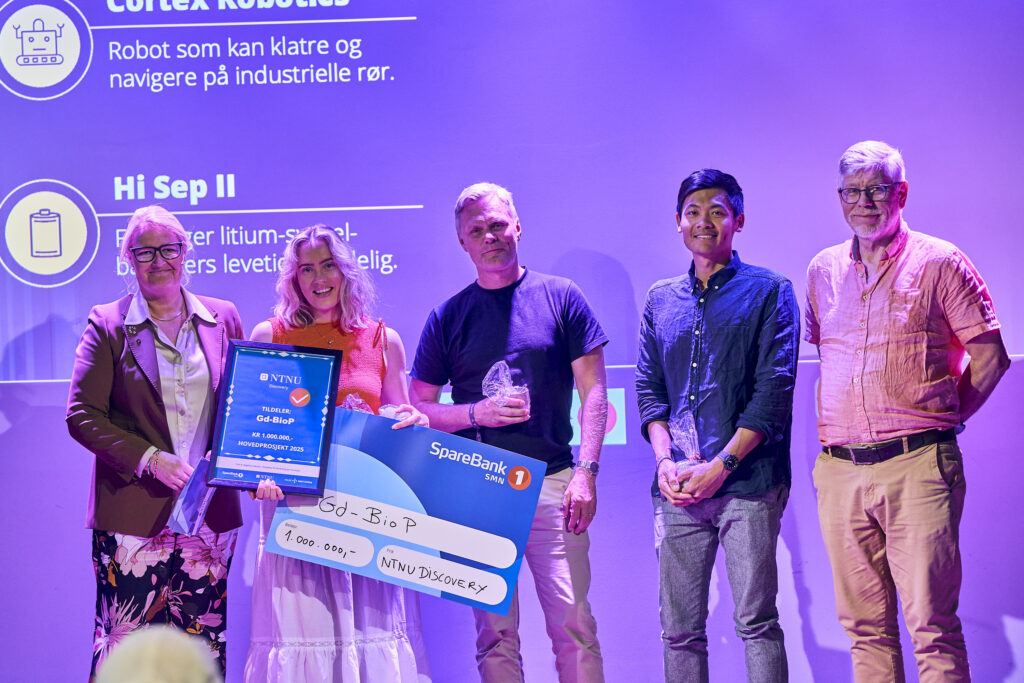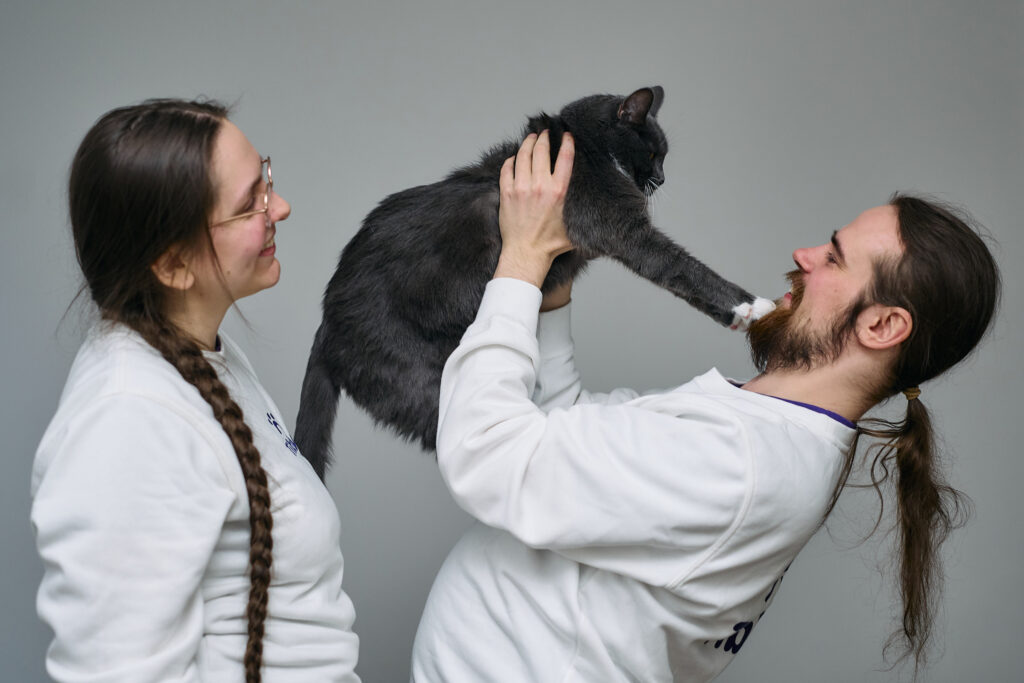Will give the wheelchair smart features
Text: Anne-Lise Aakervik
Photo: Synlig.no v/Erik Børseth
Julia Baumgart’s own experience of using a wheelchair in adapted activities prompted her to research better physical health for wheelchair users. The aim is for the wheelchair to function as an activity watch and measure physical activity.
.

Julia Baumgart and Vikram Singh Parmar
Julia Baumgart sits in a wheelchair on a giant treadmill designed for roller skiers and keeps pace with the mill. At the same time, her oxygen uptake is measured and sensors on the chair capture both weight and body activity. This is how different sensor packages and activity meters are being tested in the project taking place at the Center for Elite Sports Research (SenTIF) in Trondheim.
– We know that wheelchair users have an insufficient level of activity. Here at SenTIF, we have collected data from sledge hockey athletes and Para cross-country skiers to look at energy consumption and physical activity. Surprisingly, this group also struggles to achieve good enough health indicators to minimize the risk of cardiovascular disease,” says Julia Baumgart, after getting off the treadmill. She is a Post Doctor at the Department of Neuromedicine and Movement Science and project coordinator for Paralympic research.
Need to move more
Many people think that getting around in a wheelchair on their own provides enough exercise, but it turns out that wheelchair users stimulate very few muscles on a daily basis. This leads to many health problems among wheelchair users, including obesity, diabetes and an increased risk of cardiovascular problems. They also don’t realize how inactive they are and how active they must and should be to achieve good health. Even para-athletes, who are some of the most physically active wheelchair users, have a 12-50% increased risk of cardiovascular disease.
Safe measurement of energy consumption
Innovation Manager Vikram Singh Parmar says that despite several attempts to measure the activity and energy consumption of wheelchair users, none have been successful. In Trondheim, there are several world-class environments researching elite sports, medical health and digital medicine. In an interdisciplinary project in collaboration with CERG (The Cardiac Exercise Research Group) and students from “smart sensor solutions”, SenTIF aims to develop an algorithm that can help obtain reliable measurements of physical activity and estimate the energy consumption of wheelchair users during exercise and daily activities. Funding from NTNU Discovery for a pilot project will ensure that we get somewhere.
The wheelchair as a fitness watch
– We work interdisciplinary and want to use research-based methods to come up with a solution that is more valid than what is available on the market,” says Julia Baumgart. – “At the moment, we’re testing a few parameters with sensors on the wheelchair, on the wheels and in the seat, and eventually we’ll combine these with heart measurements to create a personalized algorithm. In this way, the wheelchair will work in the same way as an activity watch, instead of the one you wear on your hand.

From standard to personalized
– “We’ re on our way, but it takes time,” says Vikram Singh Parmar. – We have the knowledge, and we test different technologies. Testing in the laboratory means testing standardized equipment, but in everyday life the ability to standardize is limited. There, the sensors are tested in a completely different context, and this must be adapted. “Currently, there are several commercial sensors that we can use in these tests. Then we check where they should sit on the wheelchair to provide the best feedback and where they should be on the user’s body.
– If, after this pilot project, we can come up with an algorithm that measures and translates data into energy consumption and health benefits, we want to go further and develop this into a working product,” says Parmar.
– “It’s the user of the wheelchair that’s our goal, not the chair itself, but since it’s an important aid, it’s a key component. We want a kind of “plug and play” solution where, after installing the sensor package, energy consumption and activity are displayed in relation to activity on a mobile phone, for example,” says Baumart.
Encouraging wheelchair users to become more active with the help of physical activity measurement will provide better health benefits and save the healthcare system from increased costs.
Facts:
There are around 65 million wheelchair users in the world. If you can mobilize just a small group of these to a more active life, this will have a positive impact on health budgets and quality of life.
People in wheelchairs are more inactive than they think and have an increased risk of cardiovascular disease, diabetes, obesity and some types of cancer. Getting a personalized activity tracker that makes it easier for wheelchair users to achieve good health is the goal for
Projects and news
Contact:
Håvard Wibe
E-mail: havard.wibe@ntnu.no
Phone: 41 47 37 68
Office: Main building, plinth, room 009
Privacy statement

Brochures and annual reports:




